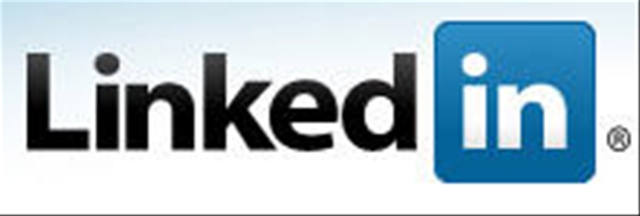It's a JUNGLE out there...whether you are hiring or looking for a job.
Come and share your positive ideas about job change, employment trends, workplace issues and more. You'll find it all in the Job Search Jungle!
Like JobSearchJungle on Facebook!
Posted by Carolyn Thompson on Apr 3, 2014 in
Job Search 
 The animal kingdom has come up with countless unique ways to hide or flee from predators. But sometimes they want to get noticed! For instance, when your resume looks like every other resume in the herd, it makes it a little hard to stand out to potential employers. Some animals turn to a mating call as a way to attract attention.
The animal kingdom has come up with countless unique ways to hide or flee from predators. But sometimes they want to get noticed! For instance, when your resume looks like every other resume in the herd, it makes it a little hard to stand out to potential employers. Some animals turn to a mating call as a way to attract attention.
If you have been looking for a job with poor results for a longer than the absolute necessary period of time, you may want to get creative with your CV/Resume. Sometimes it isn’t the content of your resume that is causing you to be passed up by potential employers; it could be the layout of the CV/Resume that is hurting you. With high unemployment ratings there are large piles of CV/Resumes on the desks of human resource departments across the country and most of them look the same. By getting a bit creative with your CV/Resume your credentials may get the attention that they deserve.
Like everything in life, moderation is important. You don’t want to be overly creative and be labeled in such a way that you never get a worthy job in your industry, but a little charm and personality could go a long way. Especially, as this article on Randstad Financial & Professional shows, when the economy continues to recover and there are more applicants than open positions in many professions.
- Make a creative header: the bulk of your CV/Resume should be neat and legible but there is room for creativity in the header of your resume. Try playing with eye appealing fonts, varying sized typeface, and subtle colours in order to grab a reader’s attention and keep them from moving your CV/Resume from one pile to another without a second glance. (Editor’s note: Make sure your creative font won’t be mangled by another word processor when the recruiter opens the resume. PDFs will lock in your creativity, but certain applicant tracking systems may not be able to parse your information correctly if it is not a word document with common fonts.)
- Separate sections with colours and shading: When separating the sections of your CV/Resume, like your prior experience, skillsets, and education, try creating shaded text boxes to emphasis each separation. This will also keep the reader’s attention and move their eyes further down the page.
- Create a border: Add a thin, delicate border to your CV/Resume. A sleek border surrounding your resume will help it stand out against the numerous plain, white pages of the other resumes. Make sure to pick something that will catch someone’s eye but not distract from the content of your CV/Resume.
- Put it online: Some of the best CV/Resumes around are not on a sheet of paper. They’re online. And when you compare them side-by-side with the standard CV/Resume, there is really no comparison. Because they’re online, you can animate them, add video and other interactive elements that can tell your story. Need some inspiration? Check out this lot.
- Promote it: We live in a socially connected world. You are already sharing funny pictures of cats and interesting articles you find online, so why not share and promote your CV/Resume too? Perhaps it would look out of place on Facebook, but not so on LinkedIn. You could even use Pinterest or Dribbble if your CV/Resume was visually creative.
By adding a little style to your CV/Resume you can get more attention, showcase your personality, or prove to potential employers that you’re not afraid of going above and beyond on a task. It is important to show a bit of restraint when being creative; you don’t want a potential employer to label you immature, unprofessional, or incapable of the job at hand.
No matter how creative you decide to get with your CV/Resume, it is important to remember that the content needs to be well-written, professional, and relevant. Even if you create an outstanding visual resume, if it is written sloppily and in an unprofessional manner, you may still be passed up for the position. Make sure the content of your resume is the priority; all of the creative aspects can be done after you create a well-written copy.
And when you land the interview, don’t forget to finish your “mating ritual” on a strong note! The Mating Ritual – Job Dating (Simple Rules For Interviewers and Interviewees). Even if you don’t make the cut, you can still bounce back.
This guest post was contributed by Victoria. If you have a great idea for a jungle-themed post, let us know! Guest writers or requests are always welcome!
Tags: career change, first impressions, guest, Job Search, resume, resume writing, ten easy steps to a perfect resume, tips
Posted by Carolyn Thompson on Jun 8, 2016 in
Career Path,
Lessons Learned  The job search jungle includes all biomes and species that are all indicative of Carolyn’s vast experience in her field. My name is Cammy Cohen, and as a summer intern at Merito Group I feel I am qualified to speak metaphorically on only one ecosystem. I have chosen the Temperate Deciduous Forest because of its seasonal changes. Unlike the Tropical Rainforest, which has the same temperature and weather patterns from season to season, my summer, winter, spring, and fall are all very different. I am currently a student at Virginia Tech and love being a Hokie. In Blacksburg, everyone is wearing maroon and orange on game day and you can order pizza bigger than your face until 2am. I want to share my glimpse into the professional world and my view as a college student. I truly cannot express my gratitude enough to Carolyn and everyone in this office for investing in me and immediately making me feel like part of the team!
The job search jungle includes all biomes and species that are all indicative of Carolyn’s vast experience in her field. My name is Cammy Cohen, and as a summer intern at Merito Group I feel I am qualified to speak metaphorically on only one ecosystem. I have chosen the Temperate Deciduous Forest because of its seasonal changes. Unlike the Tropical Rainforest, which has the same temperature and weather patterns from season to season, my summer, winter, spring, and fall are all very different. I am currently a student at Virginia Tech and love being a Hokie. In Blacksburg, everyone is wearing maroon and orange on game day and you can order pizza bigger than your face until 2am. I want to share my glimpse into the professional world and my view as a college student. I truly cannot express my gratitude enough to Carolyn and everyone in this office for investing in me and immediately making me feel like part of the team!
People are always taken aback by the fact that I want to be a recruiter. It seems to be a job that most just people find themselves in rather than set out for as a career. I suppose I am the exception to my perceived rule but so far, I believe this is the right path for me. I believe recruiting is an incredible use of my marketing degree. I don’t just want to market products, I want to market people’s skill sets and ambitions. I want to bridge a company’s needs with what my candidate wants, and market my firm in the process. I want to help people with the next step in their career by reviewing resumes and conducting interviews. But above all, I want what everyone should want from their career- to feel passionate about the work and to know that it has significance.
In the summer months the warm temperatures and ample sunlight harbor the growth of lush vegetation in the forest. In my current position, I am learning and growing as a professional every day. I am currently on a project with one of our clients who is a large government contractor. I am part of a team conducting the initial screening process of many diverse individuals every day.
My peek into the recruiting world has been a fantastic experience thus far, but not without falters in confidence. What I struggled with most was understanding the reason for implementing specific metrics- or why we have metrics at all. My idealistic view of recruiting was focusing on the candidate’s potential, finding the perfect job, and then making a “happy every after.” I was spending upwards of 10 minutes with candidate running through a conversation that should take no longer than 5 and stumbling through the computer software. I was reassured that I was still just learning, but that I wasn’t meeting my metrics meant that I wasn’t doing my job. This weighed on me and made me ask the question “at what point does quantity override quality and does this signify the nature of the industry?”
One day, after staying late in the office I asked this question to two of my colleagues. The question that had been nagging at me every time I opened my underperforming excel sheet. Both of them seemed surprised. My project deals with a high volume of candidates and they assured me I would get the hang of it. But that wasn’t what was concerning me; I wanted to know if this was truly representative of recruiting. They told me they felt the metrics kept them on track and was a fair, quantitative way to monitor progress. I left feeling unsure determined to understand the balance.
The next day I came back a new intern determined to streamline my efficiency without sacrificing the quality of my candidates. I found the best way to navigate the software and strived to keep my conversations concise and meaningful. Everything from this point on has clicked (which is the reason I have time to write this, might I add.) My point here is that everyone was right, I just needed to see it to believe it. So my first lesson has been learned- in a corporate environment there are quantitative standards you are required to meet but the true value of a recruiter is bringing quality alongside those metrics.
This Guest Post was contributed by Cammy, our fabulous summer intern! To see if Cammy has a position for you, apply here: Merito Group Career Opportunities
Tags: accomplishments, adapt, career, Career Path, expectations, experience, first impressions, goals, guest, new job, skills, success, summer intern, unemployment
Posted by Carolyn Thompson on May 22, 2014 in
Self Improvement 
Tips to write an effective, professional bio.
As a talent acquisition and search services firm, we have the frequent opportunity and pleasure to neaten and expand resumes and professional profiles. This helps our clients to better see the experience of a candidate and also helps our candidates land the perfect job. You can find many articles in this blog about tips to write the perfect resume.
This week I had the occasion to help one of my longtime friends write their professional bio. Unlike a resume, cover letter, or profile, a bio should highlight your current company, your immediate related professional background, and also include a bit of your personality in a few short paragraphs. Your alma mater, interests, major projects, and accomplishments should be a couple of sentences and, if applicable, media mentions or notable clients can be included. Incorporate as many numbers as you can and mention if you are involved in any outside activities and member organizations.
All of these points are the “eggs” that need a home outside of your resume. The nest of your professional bio can be used on company websites, requests for proposals, and many other areas. Your nest can only hold a few eggs at a time, so as your career changes and grows, be sure to swap out your accomplishments. It is good to update your bio once a year along with your resume so you aren’t scrambling for it at the last minute.
Below is an example:
BEFORE
Harry Miles is the Field Operations Director for Interior Design Company Inc. He has over 25 years of healthcare planning, activation, and patient move planning experience. He has developed proprietary tools to accurately budget and plan complete facility activations. Most recently he planned a 300,000 sf in patient facility located in Guam: equipment delivery and installation, activation, training, transition planning, patient move planning and relocation of reuse all completed forty five days. The project was a huge success and finished on time and within budget. In his career he has planned and executed over 200 projects with an emphasis on patient care and staff safety, budget and schedule. He has a great deal of experience organizing, training and motivating people toward a common goal.
AFTER
Harry Miles, PMP, is the Director Field Operations for Interior Design Company Inc.
Harry attended the University of Notre Dame on a full football scholarship where he played as a linebacker for 4 years while he obtained his Bachelor’s degree in Political Science.
Harry brings 20+ years of healthcare operations, logistics and planning experience to his role at Interior Design Company Inc. This boutique Alaskan and Native American Minority Business Enterprise is equally adept at meeting the needs of clients in the contiguous 48 states and all US Territories.
He recently delivered a 300,000 sf inpatient facility project located in Guam on schedule – 45 days from receipt of equipment. This comprehensive, complex start to finish project included design, equipment procurement, delivery, installation, activation, training, transition planning, patient move planning and relocation.
He has a great deal of experience organizing, training and motivating people toward a common goal. He has developed proprietary budgeting and scheduling tools that have uniquely allowed him to successfully execute over 200 projects with an emphasis on patient care and staff safety both domestically and internationally.
Harry and his family live in the Washington, DC area. He grew up in South Bend, IN and is an expert in University of Notre Dame sports trivia. He was a high school State Champion in Tennis, speaks Zulu, the bush language of South Africa, and has a unique passion for large scale implementation and delivery projects.
For more information on Harry and Interior Design Company Inc. services visit his website or email him at Harry’[email protected]
———–
If you need help reworking or creating your professional bio, email Lindsay at [email protected] with your resume and to inquire about pricing.
Tags: accomplishments, bio, career, career change, Career Path, communication, experience, networking, profile, resume, ten easy steps to a perfect resume, ten steps to finding the perfect job, tips, volunteer
Posted by Carolyn Thompson on Dec 15, 2013 in
Building Confidence,
Career Path 
 As the holiday shopping rush starts, it has dawned on many that the New Year is now just a few short weeks away. It’s that time of the year to grab a moment and simply take stock of what you’ve done well this year, what you want to improve upon for next year, and set goals. Most importantly, it’s resume update time!
As the holiday shopping rush starts, it has dawned on many that the New Year is now just a few short weeks away. It’s that time of the year to grab a moment and simply take stock of what you’ve done well this year, what you want to improve upon for next year, and set goals. Most importantly, it’s resume update time!
Many people don’t take the time to update their resumes annually which creates a monumental chore when you suddenly need it (job change, promotion, bio, etc.). As we all rush through the malls and stores on Black Friday trying to get in the bulk of our Holiday shopping, think about another way you will be able to save during this season. Instead of wracking your memory for accomplishments from the previous 5 or ten years and taking days or weeks to pull your polished resume together when it is needed, make updating your resume a part of your holiday list. It is so much easier to keep things in perspective and keep track of what you have contributed year over year if you have an annually designated time to update. This year’s accomplishments might not be as significant as next year’s but it can become more difficult to remember details of projects as your work evolves. Making note of these things every year will save you time and worry. Time is money, so save yourself both by being prepared.
Just as squirrels collect and store nuts so they’ll have food to last through winter, you can stockpile your accomplishments in your resume every winter. TEN EASY STEPS TO A PERFECT RESUME is a convenient source for you to download from Amazon.com with real life examples of how to organize your resume in order to find the PERFECT JOB. A good job description with your specific accomplishments listed under each role showing what you have made, saved or achieved will give future readers of your document a great picture of not only what you have done but what you can do for them if they hired you. Use numbers, specifics, percentages, etc. to quantify your contributions. Definitely note any special awards or accolades you may have received.
Try answering these questions:
- What change occurred in my company this year and how was I involved in that?
- How has my department and/or role evolved this year?
- What were the major projects I worked on and how did they affect the division/ company’s performance?
Year end is also time to make sure you have completed your necessary CPE (continuing professional education). If you have earned licenses, keep your continuing education current so you aren’t scrambling to find classes that will meet your needs at the last minute.
The squirrels who have gathered the most nuts will be prepared for any kind of winter, so follow their example and you won’t have to go nuts to catch up!
Tags: advice, CPE, goals, Job Search, resume, setting goals, success, tips
Posted by Carolyn Thompson on Nov 15, 2013 in
Lessons Learned 

To all of our regular readers of JobSearchJungle.com, we apologize for the brief interruption in our new content over the past few months. Unexpected medical and technical issues presented themselves which are now both nearly resolved so we are back online!
One of the funniest moments that has ever happened to me as an executive recruiter occurred in the intermission, and I feel compelled to share it with you.
A few weeks ago on a Sunday afternoon, I was reviewing resumes submitted for an Executive Project Manager in Commercial Construction position and saw that one of the applicants had accidentally attached a cover letter instead of their resume to the job posting. I went ahead and read the letter, twice in fact, because I wasn’t quite sure that I was reading it correctly. On the second pass, I confirmed that I had read and interpreted it correctly – the person had attached their online dating profile instead of their resume cover letter.
An easy oversight to make because the file was simply named “personal bio,” but imagine if I had been the manager at the company who was hiring for the position – what kind of impression would that have made?
I looked the candidate up on LinkedIn.com and called him to explain that he had, in fact, sent me the wrong letter. After a brief conversation about his work experience, we determined that he wasn’t a fit for my client but I did mention that if I came across anyone that he might like to date based on what he described in his bio, I would make the introduction. (I have successfully set up and married off 11 couples in my time.)
Well, last night at a client’s housewarming party, I met someone he might like… today I went ahead and made the introductions. So, while the original point of my story was to caution you to always make sure you have attached the correct document when you are job searching, this ending may turn out to be about how virtual introductions can create attachment.
Stay tuned!
Tags: linkedin.com, recruiter story, resume, resume preparation
Posted by Carolyn Thompson on Nov 21, 2012 in
Career Path,
Executive Coaching 
 As the holiday shopping rush starts, it has dawned on many that the New Year is now just a few short weeks away. It’s that time of the year to grab a moment and simply take stock of what you’ve done well this year, what you want to improve upon for next year, and set goals. Most importantly, it’s resume update time!
As the holiday shopping rush starts, it has dawned on many that the New Year is now just a few short weeks away. It’s that time of the year to grab a moment and simply take stock of what you’ve done well this year, what you want to improve upon for next year, and set goals. Most importantly, it’s resume update time!
Many people don’t take the time to update their resumes annually which creates a monumental chore when you suddenly need it (job change, promotion, bio, etc.). As we all rush through the malls and stores on Black Friday trying to get in the bulk of our Holiday shopping, think about another way you will be able to save during this season. Instead of wracking your memory for accomplishments from the previous 5 or ten years and taking days or weeks to pull your polished resume together when it is needed, make updating your resume a part of your holiday list. It is so much easier to keep things in perspective and keep track of what you have contributed year over year if you have an annually designated time to update. This year’s accomplishments might not be as significant as next year’s but it can become more difficult to remember details of projects as your work evolves. Making note of these things every year will save you time and worry. Time is money, so save yourself both by being prepared.
Just as squirrels collect and store nuts so they’ll have food to last through winter, you can stockpile your accomplishments in your resume every winter. TEN EASY STEPS TO A PERFECT RESUME is a convenient source for you to download from Amazon.com with real life examples of how to organize your resume in order to find the PERFECT JOB. A good job description with your specific accomplishments listed under each role showing what you have made, saved or achieved will give future readers of your document a great picture of not only what you have done but what you can do for them if they hired you. Use numbers, specifics, percentages, etc. to quantify your contributions. Definitely note any special awards or accolades you may have received.
Try answering these questions:
- What change occurred in my company this year and how was I involved in that?
- How has my department and/or role evolved this year?
- What were the major projects I worked on and how did they affect the division/ company’s performance?
Year end is also time to make sure you have completed your necessary CPE (continuing professional education). If you have earned licenses, keep your continuing education current so you aren’t scrambling to find classes that will meet your needs at the last minute.
The squirrels who have gathered the most nuts will be prepared for any kind of winter, so follow their example and you won’t have to go nuts to catch up!
Tags: accomplishments, Career Path, contributions, CPE, education, goals, resume update, resume writing, setting goals, ten easy steps to a perfect resume, ten steps to finding the perfect job
Posted by Carolyn Thompson on Aug 16, 2012 in
Building Confidence,
Job Search,
Thinking Positive 
 There are few things more terrifying to a 20-something than entering the world of “real” employment. You’ve obtained your degree, put in the classroom hours, stayed up late in the library, written that final essay, and walked that final trip from campus to the ever-looming “real world”. While the working world has always been a challenging aspect of growing up for young adults throughout the year, 20-somethings today face several new (or seemingly new) challenges. With a job market that values experience, an economy struggling to survive, and a youth society burdened by hefty student loan debt, the waters of the “real-world” are turbulent and harsh at times. Many new graduates are either struggling to find work and struggling to stay afloat in the working world. That being said, the waters of new employment don’t have to be overwhelming. As an educated, intelligent, and passionate young professional, you are equipped with the wits and ability to swim the employment sea—and even enjoy the waves.
There are few things more terrifying to a 20-something than entering the world of “real” employment. You’ve obtained your degree, put in the classroom hours, stayed up late in the library, written that final essay, and walked that final trip from campus to the ever-looming “real world”. While the working world has always been a challenging aspect of growing up for young adults throughout the year, 20-somethings today face several new (or seemingly new) challenges. With a job market that values experience, an economy struggling to survive, and a youth society burdened by hefty student loan debt, the waters of the “real-world” are turbulent and harsh at times. Many new graduates are either struggling to find work and struggling to stay afloat in the working world. That being said, the waters of new employment don’t have to be overwhelming. As an educated, intelligent, and passionate young professional, you are equipped with the wits and ability to swim the employment sea—and even enjoy the waves.
Jumping In
The first step to succeeding in the world of first time employment is to fully commit to the process. The water might be cold and uninviting in many ways, but you’ve got to just jump right in. Throw yourself out there. Send out endless resumes. Network with everyone you can. Make the job search your first full time job. Trust me—you’ll succeed eventually. Once you land that first “real” job, dive in head first once again. You have to commit. Your first position may not be that dream job you’ve always wanted, but it is a start. Commit yourself to completing the best work you possibly can. Diving in full force will help you make the most of your experience. Try not to be the reserved and timid new kid. Take charge (in the appropriate ways of course) and own your work.
Head above Water
As a first time employee, it can be easy to feel in over your head at times. Just as swimming in the big waves can be scary the first few times, a new job can take some time to find your footing. But, never underestimate your ability to stay afloat. Those first few weeks at a new job can be a struggle. You’re meeting new people, learning new tasks, familiarizing yourself with new procedures—it can be a lot to take on. Even more so, new grads have the added challenge of being new to the employment waters completely. It will take some time to feel comfortable among the waves and choppiness, but you’ll eventually find your way past the break.
Going with the Motions
As a newbie employee in the workforce, things can be choppy at first. The working world isn’t going to be exactly like college. But, even with the changes and challenges, you are well prepared to succeed with your professional pursuits. Think about the things you did in college to succeed and translate those pursuits to your professional life. Your drive, motivation, brains, and goals drove you to succeed in school—and will drive you to succeed in a career as well. While making flashcards and staying up all night in the library may not be the right plan of attack anymore in the working world, that dedication is still essential. You’ve got to learn to go with the motions when you enter the working world for the first time. Things are going to be different. Think of it like this—college was like swimming in the Gulf and the professional world is jumping fresh-faced into the Atlantic (it’s a different pond). Learn to go with the motions. Don’t fight to try to do things the same way you always have. Sometimes you’ll have to let yourself just move with the waves and learn as you go (and with some help).
This guest post was contributed by Samantha Gray. Samantha is a freelance writer who specializes in writing about career advice for college students. She enjoys spending time with her various pets, reading poetry, and traveling to off-the-beaten-path countries and regions. She welcomes questions or comments at samanthagray024 @gmail.com.
If you have a great idea for a jungle-themed post, let us know! Guest writers or requests are always welcome!
Tags: adapt, advice, college grad, confidence, expectations, experience, fear, first impressions, guest, Job Search, networking, new job, research
Posted by Carolyn Thompson on Jul 23, 2012 in
Job Search 

What sets one tree apart from another? In the jungle, these woody plants are a mass of trunks and foliage. They grow at a pace and the larger tress can live hundreds or even thousands of years. What makes each tree unique?
Trees have different origins, sizes, and can serve different functions. Some trees are edible and grow components that serve as food to the animals in the jungle. Some grow higher than others providing the upper canopy to the ones below that need shelter to survive. Others shed their foliage and provide ground cover allowing other seeds to take root and grow.
As job seekers, consider yourselves as trees in the jungle. Very similar to each other in the broad sense, but very different in your unique features. No two trees are the same, but how can you set yourself apart and illustrate to potential employers what skills and experience you bring to the table to perform the necessary functions of the jobs you are interviewing for?
Accomplishments.
Recruiters see hundreds of resumes each week where job seekers have painstakingly detailed their duties to the nth degree, but the content is devoid of accomplishments. The resume ends up detailing the job duties alone, which is something anyone in that position should be able to perform competently and will not set you apart from any other individual who has held the same position. A job description or a description of your day to day activities will not allow potential employers to envision how you will excel in your future company. That is where your accomplishments come in. Accomplishments are what you have made, saved, or achieved in your previous roles that ultimately benefitted the department or company.
Accomplishments are only significant to the environment/situation where they occurred and are thus unique to you. Make use of bullet points within your experience to set your accomplishments apart from your duties. Use numbers to create objectivity: percentages, dollar amounts or other relative units of measure to show the breadth of impact the accomplishment had on the organization where it occurred.
You are as unique as any tree in the jungle, but you have to showcase your own special features through detailing your accomplishments within your resume.
For more resume tips, pick up a copy of Ten Easy Steps to A Perfect Resume.
Tags: accomplishments, employers, Job Search, resume, resume writing, skills, ten easy steps to a perfect resume, tips, volunteer
Posted by Carolyn Thompson on Mar 28, 2012 in
Job Search 
 Resumes are your first impression when applying for a job and first impressions mean everything. In order to land that interview, be careful with what you produce for your resume. Here are 5 common resume killers that are stalking you even now.
Resumes are your first impression when applying for a job and first impressions mean everything. In order to land that interview, be careful with what you produce for your resume. Here are 5 common resume killers that are stalking you even now.
Generic wording: Your resume is your chance to speak and tell your possible future employer about your background and your capabilities before actually having the opportunity to meet with them. Therefore, it is very important that your words are clear and precise. Job descriptions and duties, objectives and hobbies should stand out, do not use generic wording, and use memorable words. Example of a bad objective: ‘My objective is to find a career and a company that I can grow with and excel in.’ the reason why this is bad because it says nothing about yourself and what you actually want. This objective statement is generic and boring. Think outside of the box and off the beaten path to evade this predator.
Job History: There are three things that can turn away an employer faster than you think: Lack of job experience, gaps between employment, and too much short term employment. If you have any of these things be prepared to explain, that is if the employer even considers your resume. These three no no’s are warning flags for employers. They will worry about your commitment to their company if they see lots of short term jobs. Avoid these three things before they spring their trap.
Misspellings, Grammar and Punctuation: It is very important that you review your resume several times. Once you have completed your resume, look it over and then pass it on to others to help you. Having an extra pair of eyes review your resume can help catch any errors. There are also very inexpensive resume services online where professionals can look over your resume and help you. (Editor’s note: There are also free resume workshops available through libraries, churches, community centers, and even some recruiting companies may do them from time to time. Attend as many as possible to receive feedback.) Clever tricks this jungle hunter uses can include words that are spelled correctly but are misused, typos in names, and inconsistencies in your style.
Contact Information: Believe it or not this is a very big problem in resume writing. Many people do two things, have inappropriate email addresses or forget to update their contact information with the correct phone number. To dodge this killer, first things first, we are in an age now where it is not necessary to put your address on your resume, (Editor’s note: an address may help you advertise that you are local to a certain area and tells recruiters to consider you for local positions.) a phone number and email address will work just fine. Secondly, make sure your email address is professional, [email protected] is not okay. If you have a common name and have trouble finding a handle that has not been used, try different variations of your name. Last, call the number you have printed on your resume, just to double check. You will kick yourself later if you found out you switched a number and missed a call from an employer.
Visually Unpleasing: You have the right idea when you want to stand out, but there is such a thing as doing too much and this hunter likes the super flashy. Avoid graphics, designs and colors. Keep it simple and professional. Also be careful with your line spacing and margins. Use bold and underline with dividing the sections of your resume up. You want it to be easy to read and not a burden to dive into. (Editor’s note: Also make sure your resume is not a pdf. These will show up as blank when parsed by several kinds of software that help companies gather resumes from popular job search sites.)
Now you know the things you should avoid during your resume writing. Don’t forget to have an extra pair of eyes review before you start sending it out and you should be safe. Resume write in groups to catch those hunters! Good luck in your job hunt!
This guest post is contributed by Kate Croston. Kate is a freelance writer and holds a bachelors degree in Journalism and Mass Communication. She writes guest posts for different sites and loves contributing internet service related topics. Questions or comments can be sent to: katecroston.croston09 @ gmail.com.
If you need help with your resume, grab a copy of TEN EASY STEPS TO A PERFECT RESUME from Amazon. It will really make the process a lot easier for you.
If you have a great idea for a jungle-themed post, let us know! Guest writers or requests are always welcome!
Tags: advice, first impressions, guest, Job Search, resume, resume workshop, resume writing, ten easy steps to a perfect resume, tips
Posted by Carolyn Thompson on Dec 5, 2011 in
Career Path 

In the retail jungle, the holiday shopping season is traditionally followed by yearend inventory counts. On the farm, it happens right after the harvest. As professionals, we should also conduct our own yearend inventory and update our resumes with our most noteworthy accomplishments of the year.
As illustrated in my book, TEN EASY STEPS TO A PERFECT RESUME, you want to have a good description of your company, role, and primary responsibilities as well as a brief list of your most significant accomplishments. Accomplishments are separate from your job description, what you or anyone else would be doing in your position, and they are what most set you apart from others. Accomplishments are details about what you made, saved, or achieved that are special. Relevantly describe how they, and your role, relate to the overall company structure. Include projects you designed, led through development, and took to completion. Describe initiatives you were involved in on a team or awards and recognition you received that show you went above and beyond the call of duty.
When describing your accomplishments it’s important to use numbers, percentages, or other quantitative descriptions to show your contribution to your role and the company as a whole. You may have found budget cuts of 10% that increased company profits by $50,000, or you led a software implementation that created efficiencies in reporting and reduced your monthly close by 2 days. Whatever your situation, show the metric, or key performance indicator (KPI), that you affected through your outstanding performance.
Some people have a hard time bragging about themselves, so try answering these questions as a start:
- What change occurred in my company this year and how was I involved in that?
- How has my department and/or role evolved this year?
- What were the major projects I worked on and how did they affect the division/ company’s performance?
Your answers should spur your train of thought about what increased or decreased and what your part was in that change.
This process can also help you with your goal setting. Perhaps, after you see your accomplishments on paper, you’ll realize there is a fundamental intellectual challenge that you are lacking or something you really wish you had been involved in that would have offered you personal and/or professional growth.
Even if you are content with your current role and/or employer and not considering a job change next year, it’s important to keep your resume up to date. Companies change over time, people take on more responsibility and taking stock of the harvest at the end of the year will make it much easier to update your resume when you do need it. Remember, your resume should be an accurate reflection of the experience that you intend to carry forward, not everything you have done, so choose your examples wisely.
Related Article: Setting Goals
Tags: accomplishments, challenge, exercise, experience, goal setting, goals, Job Search, key performance indicator, performance, professional grouth, quantitative, resume, resume writing, yearend
![]()
 The animal kingdom has come up with countless unique ways to hide or flee from predators. But sometimes they want to get noticed! For instance, when your resume looks like every other resume in the herd, it makes it a little hard to stand out to potential employers. Some animals turn to a mating call as a way to attract attention.
The animal kingdom has come up with countless unique ways to hide or flee from predators. But sometimes they want to get noticed! For instance, when your resume looks like every other resume in the herd, it makes it a little hard to stand out to potential employers. Some animals turn to a mating call as a way to attract attention.

 As the holiday shopping rush starts, it has dawned on many that the New Year is now just a few short weeks away. It’s
As the holiday shopping rush starts, it has dawned on many that the New Year is now just a few short weeks away. It’s 
 There are few things more terrifying to a 20-something than entering the world of “real” employment. You’ve obtained your degree, put in the classroom hours, stayed up late in the library, written that final essay, and walked that final trip from campus to the ever-looming “real world”. While the working world has always been a challenging aspect of growing up for young adults throughout the year, 20-somethings today face several new (or seemingly new) challenges. With a job market that values experience, an economy struggling to survive, and a youth society burdened by hefty student loan debt, the waters of the “real-world” are turbulent and harsh at times. Many new graduates are either struggling to find work and struggling to stay afloat in the working world. That being said, the waters of new employment don’t have to be overwhelming. As an educated, intelligent, and passionate young professional, you are equipped with the wits and ability to swim the employment sea—and even enjoy the waves.
There are few things more terrifying to a 20-something than entering the world of “real” employment. You’ve obtained your degree, put in the classroom hours, stayed up late in the library, written that final essay, and walked that final trip from campus to the ever-looming “real world”. While the working world has always been a challenging aspect of growing up for young adults throughout the year, 20-somethings today face several new (or seemingly new) challenges. With a job market that values experience, an economy struggling to survive, and a youth society burdened by hefty student loan debt, the waters of the “real-world” are turbulent and harsh at times. Many new graduates are either struggling to find work and struggling to stay afloat in the working world. That being said, the waters of new employment don’t have to be overwhelming. As an educated, intelligent, and passionate young professional, you are equipped with the wits and ability to swim the employment sea—and even enjoy the waves.
 Resumes are your first impression when applying for a job and first impressions mean everything. In order to land that interview, be careful with what you produce for your resume. Here are 5 common resume killers that are stalking you even now.
Resumes are your first impression when applying for a job and first impressions mean everything. In order to land that interview, be careful with what you produce for your resume. Here are 5 common resume killers that are stalking you even now.






